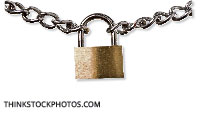 It’s the end of a long day. Your back is sore, your knees are aching, and the sun has been beating through that greenhouse glass for hours on end. You’re ready to retire to your quarters and call it a day. Except, maybe you’re not quite done yet. Maybe there’s one thing you forgot.
It’s the end of a long day. Your back is sore, your knees are aching, and the sun has been beating through that greenhouse glass for hours on end. You’re ready to retire to your quarters and call it a day. Except, maybe you’re not quite done yet. Maybe there’s one thing you forgot.
One of the overlooked tasks in a greenhouse is security. Making sure you protect yourself and your equipment from theft and destruction should be an important part of your day-to-day. Remembering to lock-up is easy enough. What other steps can you take to ensure you’re protected from criminals?
Jeff Stewart, director of the Mississippi Agricultural and Livestock Theft Bureau, has some tips that could help protect you and your business.
Mark your equipment
Stewart recommends marking your equipment with a subtle and difficult-to- cover mark. That distinguishing feature helps law enforcement locate your missing equipment and confirm that it’s yours.
Many growers have trailers, a utility that Stewart describes as a “dime a dozen.” Finding a way to specify that equipment is yours is important.
“Crooks will remove identification and VIN stickers,” says Stewart. “They’ll remove that to make it harder for law enforcement to identify.”
He recommends using a welder or grinder to etch numbers into the equipment. Adding something as simple as your birth year, or the last four digits of your cellphone number, could be key in helping law enforcement identify missing equipment down the road.
Add GPS tracking to expensive equipment
GPS tracking devices are becoming increasingly cheaper. They offer several protective features that could aid in theft prevention. Stewart recommends adding a GPS tracker to your more expensive equipment.
“You can hardwire them to the battery and set up a geo-fence around that piece of equipment,” he says. “Go online, set it up, and say if it moves past this certain area you’ll have an alert sent to your cell phone, or your email, or whatever account you have it set up to.”
A quick Google search of GPS tracking devices will reveal that prices for each device can vary widely —anywhere from $50-$350 for the equipment. Device capabilities can differ significantly from one tracker to another, as well, so do your research before investing in a GPS Tracker. Stewart’s department has considered adding them to its own vehicles.
Lights, cameras, alarm
Stewart suggests investing in a video surveillance system and alarm, if possible. Footage has helped Stewart’s department break a number of significant cases and purchasing the equipment is cheaper than ever.
“It’s not like the old days when you had to spend thousands of dollars to put up video cameras,” he says. “And you don’t have to be a rocket scientist to operate them.”
While many businesses are already equipped with alarm systems, Stewart believes they could still be in jeopardy.
“Perpetrators will often cut phone lines and then cut the power,” he says. ” Then the alarm will go off but not send a signal.”
To counter this, he recommends purchasing a back-up power source.
Screen your employees
An inordinate number of agriculture crimes are committed by employees who have access to the products and possess an understanding of their worth and how best to steal them. Stewart recommends using a professional screening service to run background checks on all of your employees.
This is another area where video surveillance has been useful. Adding cameras around your property can reduce crime and help catch criminals.
Photograph your equipment
While Stewart’s team is familiar with agriculture equipment, that doesn’t mean that local law enforcement is.
Therefore, Stewart says, “Take pictures of all of your equipment. Give local law enforcement an idea of what they might be looking for.”
Keep detailed records
Maintain detailed records of your equipment and your inventory. Make sure you have a list of all serial numbers. If there’s a piece of equipment that doesn’t have a serial number, etch a four-digit code on it and make it difficult to find, or difficult to cover. And keep multiple copies of all your records and store them in different locations.
“That way if your office is broken into you have back-ups,” he says.
Pay attention and stay vigilant
The most important tip Stewart offers is also the easiest. That is, stay aware of your equipment.
Knowing when a piece of equipment went missing gives law enforcement a place to start their investigation. If anything goes missing and it's reported immediately, then officers can start by asking your neighbors if they saw something suspicious. If, however, a few months have gone by, the trail might have gone cold.
What it comes down to is this, says Stewart: “Be vigilant. You spend a lot of money and invest a lot of time in your equipment. Pay attention to it.”
Jeff Stewart is the Director of the Mississippi Agricultural and Livestock Theft Bureau. He has been in law enforcement for 16 years, eight of them with the Agricultural and Livestock Theft Bureau. He has been director for two years.
For more: http://bit.ly/1ewWlgB

Explore the March 2014 Issue
Check out more from this issue and find your next story to read.
Latest from Greenhouse Management
- Chilli thrips (Scirtothrips dorsalis)
- GS1 US Celebrates 50-Year Barcode 'Scanniversary' and Heralds Next-Generation Barcode to Support Modern Commerce
- University of Florida offers Greenhouse Training Online program on irrigation water
- Flower trends in full bloom
- ‘Part of our story’
- Dramm introduces new hose, sprinkler attachments for home gardeners, nurseries
- Nominate an outstanding leader
- Profile Products hires sales and business development manager for Europe and Asia





